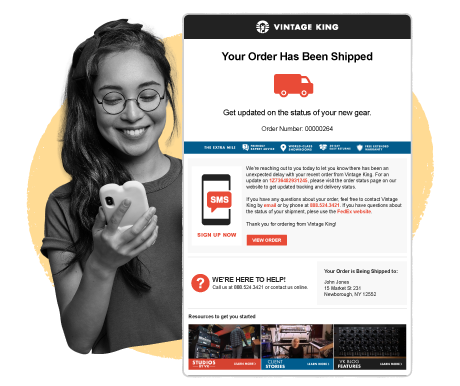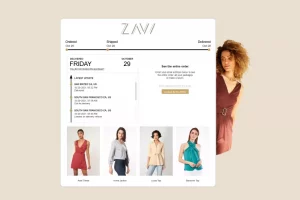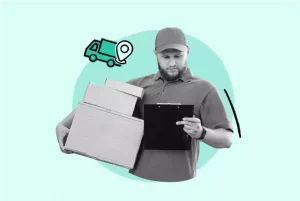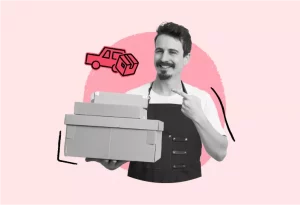
How to send a test email – Klaviyo
Are you curious how test emails work in Klaviyo? In this step-by-step guide, we will show you how to send a test email and view the results.
Boost customer experience and reduce support tickets
Realtime order and shipment tracking
Proactive order and shipping notifications
Predictive pre-purchase estimated delivery dates
Self-Serivce branded order tracking
Effortless experience delivered
Make returns profitable and delight customers
Flexibility to define any return destinations & conditions
Simplify returns for your customers and team
Incentivize exchanges over returns
Returns management made easy for your team
Understand why your customers are returning
Unify the online and the in-store experience
Hassle-free pickup experience for customers
In-Store Dashboard to keep operations streamlined
In-Store and Online orders unified
Drive foot-traffic to your stores
Boost customer experience and reduce support tickets
Realtime order and shipment tracking
Proactive order and shipping notifications
Predictive pre-purchase estimated delivery dates
Self-Serivce branded order tracking
Effortless experience delivered
Make returns profitable and delight customers
Flexibility to define any return destinations & conditions
Simplify returns for your customers and team
Incentivize exchanges over returns
Returns management made easy for your team
Understand why your customers are returning
Unify the online and the in-store experience
Hassle-free pickup experience for customers
In-Store Dashboard to keep operations streamlined
In-Store and Online orders unified
Drive foot-traffic to your stores
Find the answer to all your questions
Explore the most comon questions about WeSupply
Calculate the ROI that WeSupply can bring you
Request a no strings attached review of your current shopping experience and missed conversion opportunities
Take a step by step trip through our functionality to see how we can improve your ecommerce processes.
Read actionable articles on how to optimize your post-purchase experience and decrease support tickets
Get inspired by stories of how our customers implemented an effortless post-purchase experience
A Deep Dive into Top Companies' Order Tracking & Returns Strategy
Wondering if WeSupply is a good fit for you? Read through our use cases to see how we can help you increase conversion & improve CX!
[FREE Revenue Calculator Excel ]
Are you looking to grow your revenue by 32% with order status emails and branded tracking pages that convert? Download our calculator and understand the additional revenue that your brand can generate.

It’s a hot Sunday afternoon. As you’re scrolling down your phone on social media, something catches your attention. A spark of inspiration started a fire of passion and drive inside of you.
Now, regardless of how unusual this might seem to your close group of friends and family, you’ve decided to start a new activity: creating your own at-home gym. Or preparing your own meals using an air fryer. Or rollerskating. Your choice.
And so you’ve ordered yourself the tools you need on your new adventure, and you just can’t wait for the package to arrive.
“Order Shipped.“
Unsatisfying but pretty clear message— Your order now has shipped.
As days go by, you keep checking the order tracking page. At some point, you now have a new status update, letting you know that the order is in transit. But what does “in transit” mean and how long will it take?
Picture yourself staring at your front door (metaphorically) for the last few days waiting for that package to arrive. Not the best look. We all know that online order tracking is amazing, but sometimes it’s hard to understand what the different status updates mean.
This is a common scenario for a significant part of customers.
Even if you’re working in retail or eCommerce or you’re actually a merchant yourself, you’ve surely been through a similar situation as a consumer as well.
You order something online and track it every step of the way, only to find out that it’s still “in transit” after a week. In transit meaning – what does that even mean?
Literally speaking, in transit refers to the act of transporting or moving one thing or person from one place to another.
According to Collins Dictionary, if people or things are in transit, they are traveling or being taken from one place to another.
In logistics, in transit refers to transporting a package from one location (e.g., warehouse, distribution center) to the final destination address, for instance, a customer’s home address.
This status is normally provided by carrier companies, the postal service, and retailers in order to keep customers informed about the condition of the package and the stage at which the shipment is (i.e., in transit).
One of the downsides is that all status updates are based on scan activity. Carriers update the status only when a vehicle arrives, departs, or is processed at one of their facilities.
This often means days on end without any updates for customers but also for customer support representatives trying to answer two of the most dreaded questions, “Where is my order?” and “What does it mean when your package is in transit?“
In this digital age, we’re all used to getting instant gratification whenever we go online. This is also true for online shopping, which is exactly why waiting for a package to arrive can even lead to post-purchase anxiety.
But what does “stuck in transit” actually mean? To put it simply, it means that the delivery is taking longer than usual due to a number of factors, such as weather delays, split shipments, or even a lost package. However, there’s no need to panic just yet. In most cases, the carriers eventually catch up and the packages will be delivered to your customers’ doorsteps.
Courier companies scan each package in order to generate a status update, therefore, it might often seem that the package is “stuck” in transit. When traveling a long distance, it’s expected to take up to several days for the status to change.
Imagine that a carrier takes a few days to go from one state to another, and they’re not stopping at any of their processing facilities. That means a package is “stuck” in transit for that entire period.
There are several factors that come into play when it’s taking longer for a package to reach its final destination. From actual distance from one location to another, there are also shipment exceptions, traffic and route changes, or higher processing times due to a high volume of orders.
Among the most common reasons for delays, we have the following:
Packages often have to go through customs clearance processes to make sure shipments meet export or import customs regulations. Delays are normally caused by missing or incomplete documentation.
In this regard, authorities in charge of these operations have to ensure safety and they need all information before proceeding, so make sure you plan ahead and provide them with all the paperwork they might ask for.
There are some things we cannot entirely predict or avoid, such as the weather or traffic conditions. Retailers have little to no control over these factors, so the best they can do is to proactively notify customers before they reach out to their support team.
On the other hand, often packages have incomplete or wrong details written on them. This can be avoided up to a certain extent by clearly explaining what fields need to be filled in, etc., before shipping them out.
If you want to make sure there aren’t any delays caused by exceeding package dimensions, you can split your shipment into multiple packages. Using an advanced order tracking tool, both your team and your customers can track each package separately at all times to clear out any confusion caused by partial shipments.
This way, splitting shipments before sending them out with a courier company will give you a competitive edge, helping you cut down the processing time and reduce the number of “stuck in transit” situations.
There are clear differences between “in transit” and “out for delivery” tracking statuses.
“In transit” meaning that your package is on its way to the recipient’s address. However, this doesn’t necessarily mean that your package is in a moving delivery truck or ship— it can be in any of the courier company’s depots waiting for the next scan.
On the other hand, “out for delivery” is normally the last step of the delivery process. It’s generally the last-mile delivery status update generated at the final processing facility or local post office before the delivery vehicle reaches the recipient’s address.
Think of it this way:
“In transit” refers to the transition between New York City to Boston, for instance, whereas the out of delivery” status refers to the transition between a local facility (e.g., a FedEx facility in Boston) to the customer’s home address.
Truth be told, it’s a little too late to create a premium post-purchase experience if the customer reaches out to you first.
If they’re contacting your customer care reps, it’s usually because they’re experiencing an issue regarding their order.
Moreover, consumers tend to link the shipping experience to the brand itself, and this can do more harm than good if you’re not carefully planning out the post-purchase experience.
The best way to increase customer satisfaction is to keep your online shoppers updated regarding their orders.
You need to set clear expectations, communicate throughout the entire journey, and make sure there won’t be any unpleasant surprises before (and after) the product arrives at its final destination.

One last burning question for both customer care reps and online shoppers:
“How long does it take before I get the next shipping status update?”
How can you, as a merchant, answer that?
Firstly, the transit time is the amount of time it takes for a shipment to be delivered, from the moment it leaves a seller’s warehouse to the instant it arrives at the final destination.
This includes the time it takes to move the goods from one place to another but also processing time at each facility.
Secondly, it’s necessary to note that the estimated shipping time, as well as the carrier, plan, or subscription you choose, can affect how many days it takes for a package to move from “in transit” to “our for delivery.”
Tracking an order can be a helpful way to approximate how long it will take to arrive at the customer’s address.
Lastly, an advanced order tracking solution can provide shoppers with various updates on the order’s progress, reducing post-purchase anxiety and removing the additional pressure from your customer care reps.
Depending on the courier service provider, shipping method, and services (e.g., FedEx SameDay service, United States Postal Service First-Class Mail, etc.), it may take from several hours to up to a few days, even weeks. This is true for both major shipping couriers but also smaller shipping companies.
As a business owner, it’s important to give your customers as much information as possible—this includes the estimated delivery date. This is the first step to minimizing the chances of them having to turn to your customer support team.
By giving your customers an estimated delivery date, you can set expectations and prevent them from becoming anxious or even frustrated if their order is delayed.
Additionally, the estimated delivery date is a feature that can be used to encourage visitors to make a purchase on your online store. By providing an estimated delivery date, you are letting the customer know when they can expect to receive their order.
In fact, displaying the estimated delivery date can even be a powerful incentive, especially if the customer needs to know exactly when the product will arrive before making a decision.
Because of the popularity of online shopping, it is important for merchants to be able to quickly deliver packages and track and manage all orders in one place. It’s also essential for customers to be able to track the status of their orders at all times.
However, basic order tracking often requires a lot of manual input. This can lead to unintentional human error, which can happen to the best of us. It’s important for your customer support team to see all orders under one roof, not having to manually insert the tracking number on a 3rd-party carrier website.
Besides, offering order tracking isn’t much use unless it’s intuitive, simple to understand, and provides information in real-time.
With an advanced order tracking system like WeSupply, employees can focus on more urgent tasks rather than chasing down shipment statuses for countless customers at once. Besides, your customers will always know the whereabouts of their order, so “stuck in transit” and “Where is my order?” won’t be an issue any longer for your team members, from customer success to marketing.
You will have fewer support tickets related to order tracking, shorter wait times on customer calls, and quicker responses to emails— what else could you possibly ask for?
Want to take the post-purchase experience
to the next level? Try Order Tracking!
WeSupply Order Tracking Helps You Build A Premium Post-Purchase Experience!
Want more details about curbside pickup in retail?
Download this guide to learn everything you need to know about BOPAC!

Are you curious how test emails work in Klaviyo? In this step-by-step guide, we will show you how to send a test email and view the results.

Online Shop ZAVI manages to increase workload capacity by 20% with 360-visibility into all shipping and returns operations.
It can be faster to send a split shipment, meaning some packages can reach your customers sooner. But what to consider beforehand?

Order tracking is a must, from the moment the package leaves the warehouse to the very last mile. But what should you be focusing on?
Advanced online order tracking is the solution you didn’t know you needed to take the post-purchase customer experience to the next level!
Why does your retail business need an omnichannel tracking solution for all orders? Keep reading this article to find out.

Times change and the behavior of porch pirates does too! Learn how to prevent package theft and protect your customers long-term.

How does curbside pickup work? It comes with both challenges and benefits, and we’re here to explain everything. Keep reading to learn more!

The question is no longer whether or not curbside delivery remains relevant, but why it will. Keep reading to see how you can use it to your advantage!